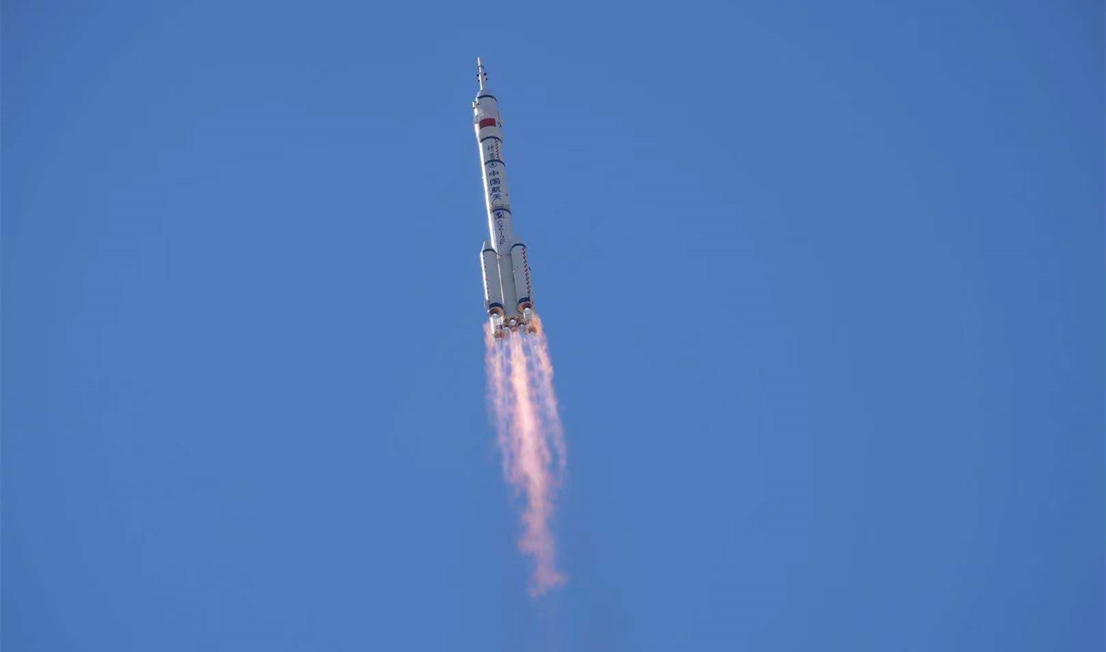China is readying Shenzhou 13 spacecraft in case of space station emergency

China may have successfully sent its first astronauts to its new space station module this month, but back on the ground authorities are still readying a new rocket in case of emergency.
Three Chinese astronauts launched to Tianhe, the country's first space station module, on the Shenzhou 12 mission on June 17. They rode to space on a Long March 2F and docked with Tianhe just over 6 hours after liftoff. The crew, consisting of astronauts Nie Haisheng, Liu Boming and Tang Hongbo, entered the module shortly after.
Now, engineers back at the Jiuquan Satellite Launch Center in the Gobi Desert are preparing another Long March 2F rocket and the Shenzhou 13 spacecraft for the China National Space Administration. The pair are to be ready on the pad for a rapid launch in the event of an emergency.
Video: Watch China's 1st space station crew enter Tianhe module
"Shenzhou 12 is docked on the space station. Because of space debris or various reasons, the Shenzhou 12 spacecraft may be at risk when it returns. Then we could launch Shenzhou 13 in the shortest time," Shao Limin, deputy technological manager of the Shenzhou 12 spacecraft, told China's CCTV media.
"The astronauts would be able to return to the ground on Shenzhou 13. In that case, it can be used as the emergency rescue ship for Shenzhou 12."

The emergency planning is reminiscent of the NASA "Launch On Need" missions planned to rescue space shuttle crews if their vehicles had suffered damage in orbit.
Get the Space.com Newsletter
Breaking space news, the latest updates on rocket launches, skywatching events and more!
Tianhe provides living quarters for the crew and propulsion for the space station. It has a rear docking port and a forward docking hub that will allow two more modules to connect and other spacecraft to visit.
That means, unlike China's two earlier Tiangong space labs, a second Shenzhou spacecraft can dock with Tianhe to perform a rescue mission.
Related: The latest news about China's space program
Engineers have also upgraded the Shenzhou spacecraft, which had a first test flight in 1999, to have a longer service life. This allows the spacecraft to be docked at the space station for longer to facilitate regular, six-month-long crewed missions.
The Shenhou 12 mission is planned to last three months, during which the astronauts will conduct two extravehicular activities, or space walks, begin using a 33-foot-long (10 meters) robotic arm and test new regenerative life support systems.
If there are no emergencies, Shenzhou 13 will launch as planned around October. Tianzhou 3, a supply mission, is expected to fly in September in preparation for the arrival of the new crew. The China Manned Space Agency (CMSA) says Shenzhou 13 will be a six-month mission. Shenzhou 14 will likewise be readied as an emergency rescue for Shenzhou 13.
China is planning 6 launches in 2022 to complete the three-module Chinese space station. Two experiment modules, Wentian and Mengtian, will launch next year along with two more crewed spacecraft, Shenzhou 14 and 15, and the Tianzhou 4 and 5 cargo missions.
Follow us on Twitter @Spacedotcom and on Facebook.
Join our Space Forums to keep talking space on the latest missions, night sky and more! And if you have a news tip, correction or comment, let us know at: community@space.com.

Andrew is a freelance space journalist with a focus on reporting on China's rapidly growing space sector. He began writing for Space.com in 2019 and writes for SpaceNews, IEEE Spectrum, National Geographic, Sky & Telescope, New Scientist and others. Andrew first caught the space bug when, as a youngster, he saw Voyager images of other worlds in our solar system for the first time. Away from space, Andrew enjoys trail running in the forests of Finland. You can follow him on Twitter @AJ_FI.
